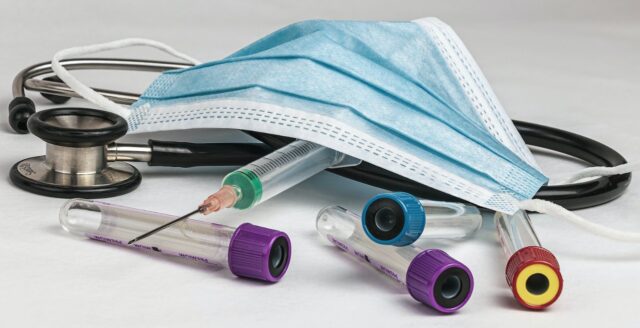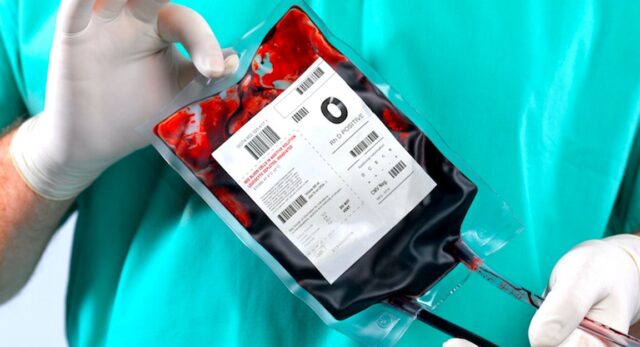
If you have visited your local drug store recently and realized that the shelves were almost empty. If you feel it’s a bit odd, then you are correct; the supply chain challenges are increasing in all sectors, and the effects of these challeges clearly show the public with the increased empty shelves.
Currently, the healthcare industry accounts for nearly 20% of the United States economy and has not been spared these healthcare supply chain challenges. As many of these issues not only harm the healthcare community, every day people will also feel the effects with longer wait times for needed medical supplies, increased prices on treatments, and more.
The medical supply chain challenging the healthcare industry cuts across the board, as other related sectors are experiencing similar challenges. The challenges include but aren’t limited to;
Labor shortages
This labor shortage does not stop with laborers loading and offloading medical supplies and equipment from trucks but also a lack of truck drivers to deliver the medical supplies to the healthcare facilities, drug stores, etc., and healthcare personel. But the labor deficiency trickles into other, unexpected areas of our healthcare system.
For example, if you operate a commercial laundry facility and get your laundry work from several hospitals in your neighborhood such as hospital bedding – the COVID-19 situation might have put constraints on your staffing. You may need to reduce your shifts, putting pressure on the fewer workers. In the long run, you may not deliver the laundry in time, making the hospital lack bedding, hence a lower bed capacity.
According to Nurse Journal, several compounding factors are behind this scarcity of healthcare personel, including;
- Rising demand to care for an aging population- shifts in the patient population mean a more significant number of senior patients.
- Older nurses and doctors approaching retirement
- High turnover rate- some due to COVID-19 related cases
- 52% of the active physician workforce is 55 years or older, meaning they can retire in large numbers at any time
- Fatigue and burnout, mostly in understaffed rural hospitals.
- Limits on medical schools, hence fewer trained staff
- Few residency programs
- Shortages of trained nurse educators and faculty
Depleted National Blood Banks

Labour shortage is severe, but we also have emerging challenges of empty national blood banks.
You may think that accident victims are the only patients who require blood. You’re mistaken. According to the American Red Cross, cancer and blood disorder patients use approximately 25% of all blood products. Women in labor can suddenly hemorrhage; specific surgical procedures may need significant volumes of blood.
Blood banks witnessed a 60% drop in donors aged 16-19 and a 30% drop in first-time donors throughout the pandemic. Employers and schools canceled blood drives due to strict safety measures imposed by the government. Blood-drive vans were suddenly unusable. And all this time, cancer patients still needed blood to undergo chemotherapy. Life continues in all its forms-new babies are born, accidents still happen.
These supply challenges, i.e., labor shortage, depleted blood banks, and healthcare systems that are yet to embrace technology, clearly depict the struggles yet to come. Be compassionate whenever the opportunity arises and thank a healthcare provider. And think about donating blood if you can.
Medical Supplies Out of Stock
From at home COVID-19 tests, surgical instruments, hypodermic needles, cleansers, and PPE supplies, these are just some of the long list of medical supplies that can be hard to get in various regions around the US & World. These medical supply shortages for hospitals, surgical centers, dental clinics, nursing homes, and other healthcare facilities are not just challenging for the medical supply procurement teams, but the many patients in need of these supplies too.
From the lingering effects of the lockdowns in the US, geo-political conflicts, rampant inflation, major logistics ports shutdown, amongst other supply chain challenges – medical supply stores around the globe are seeing their medical supply inventories dwindle. Whether at brick & morter supply stores or online stores, the “out of stock” signs are a plenty and only growing.
As politicians seek to throw money at the problem or avoid it all together, it’s really up to small businesses and big business to come together and produce better medical supply solutions for the largest hospital networks all the way down to the small doctors office in rural America.
Medical Supply Procurement Solutions

Hospitals, physicians offices, surgical centers, nursing homes, and all healthcare related practices that rely on medical supplies to treat their patients can be more proactive and stay ahead of any and all medical supply chain issues that could create many issues for you. Embracing technology, big data, and ecommerce solutions can prove to be a great asset to reducing the challenges your organization may face with supply chain issues. One healthcare tech startup out of Seattle, WA named Bttn should be considered for healthcare procurement teams that need efficient and effective medical supply procurement solutions, no matter if there are supply chain issues or not, better technology and utilizing advanced data will help your healthcare org stay ahead of the curve.
The Bottom Line on Medical Supply
Just like everyone else, the healthcare industry has felt the lingering effects of the COVID-19 lockdowns, geo-political conflicts, elections, major logistical port shutdowns, labor shortages, and much more. All adding to the medical supply chain issues that are depleting medical supply inventories throughout the US & rest of the world.
From empty shelves at the local supply store, pharmacy, surgical center, hospital, or local docotor’s office – “out of stock” signs are becoming the new normal. Not just at local stores but you’ll even see them online too when shopping for supplies on various ecommerce platforms as well.
However, in light of these supply chain challenges brings opportunity for startups to small businesses and big business to work together for the greater good. By bringing more technology, big data, and transparency to the industry in general but more specifically to the procurement divisions in charge of purchasing medical supplies, healthcare professionals can better plan around current and future challenges ensuring there are no major issues that would drastically alter their resolve to assist patients in need.







